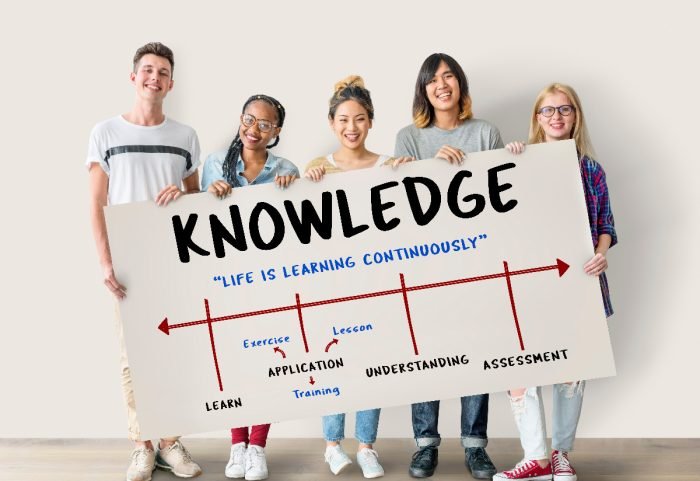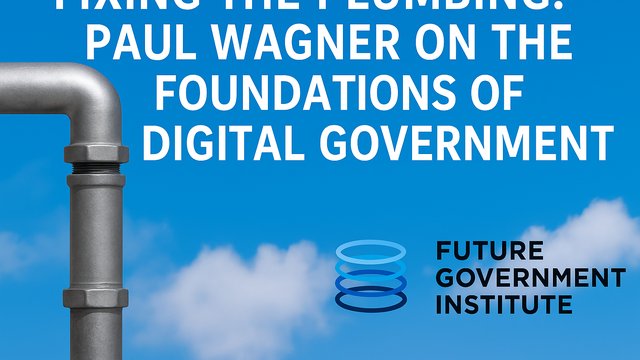

Grades. Parents use them to gauge a learner’s performance. Sort of. Educators use them to indicate general academic performance. Learners strive for ones that are considered “good” by both educators and their parents.
One of the biggest fears learners have as a result is failure. A mistake, especially on a major test or in an important subject. But what we know from life after school is that we often learn much more from our failures than we do from our successes.
A growth mindset, as defined by Positive Psychology, is “believing that your brain can grow and you can learn many new things. You are not born smart; you become smart.” The principle is that the brain, like muscles in our body, must be exercised and can become stronger with that exercise.
One of the biggest challenges for many learners is that this is a shift to a “can do” and “can learn” mindset. There is little room for “I’m not good at this” or “this is too hard.” Instead, learners are taught that while they may not be able to perform a certain task yet, they are capable of learning.
A Difference in Motivation
The first difference we see when learners are encouraged to adopt a growth mindset is that they want to learn. This is an intrinsic motivation: they are motivated by the desire for knowledge and gaining the ability “to do.”
Grades and recognition are extrinsic, or external in nature. When intrinsically motivated, a learner is more likely to respond to failure with determination and curiosity about how they can accomplish the task or do better “next time.” When extrinsically motivated, a learner is more likely to see failure as “the end.” They didn’t get the reward or grade, and are even often told it is “too late.” There may be another test, but it is on different material, or a new assignment, but the previous one is already a failure, and there is no opportunity for redemption.
This difference in motivation has a huge impact on the results we see from learners. However, providing an environment that allows for a growth mindset is essential. Educators and administrators must become more skills and outcome-focused and less focused on grades.
An intrinsic motivation causes learners to be more engaged in the learning process. But what are the long-term benefits?
The Benefits of a Growth Mindset
Learners who are motivated differently respond differently to key aspects of learning. What are those aspects? Well, according to a recent study by NCBI using neuroscience to examine the topic, here are some of the results.
Better Post-Error Accuracy
As the study highlights, learners with a growth mindset demonstrate higher accuracy after making mistakes. This suggests that they learn from their errors and improve their performance over time.
Why does this work? Because an error is seen as an opportunity for learning and growth, not an ultimate failure. Failure and mistakes are seen as an acceptable part of the learning process.
Adaptability to Challenges
Learners with a growth mindset view challenges as opportunities to grow rather than insurmountable obstacles. In fact, often the harder the challenges the more the learner advances. Even if they don’t succeed immediately, the promise of a positive outcome drives them to try harder.
This is directly related to the intrinsic reward of satisfaction vs. the external reward/consequences learners often face in traditional environments. A growth mindset approach enabled by educators fosters a “why not try?” mentality instead of an “If I’m going to fail, why try at all.”
Stress Reduction
How often do we see learners stressed out by a big test coming up, finals week, or other large and looming projects? What if instead, we allowed them to complete these challenges in stages, and even allowed for mistakes along the way? By perceiving mistakes as part of the learning process, learners experience less anxiety and stress.
This makes for healthier learners and educators. By reducing the overall stress in the classroom, the learning environment is improved.
Better Self-Monitoring
The ability to reflect on mistakes and learn from them leads to improved self-regulation. Learners become more aware of their learning processes and adjust their strategies accordingly so they can achieve overall success rather than focusing on a singular test, project, or challenge that may only be a part of a larger learning goal.
If learners monitor and regulate themselves, there is less work for educators to do as well.
Goal Setting
Growth-minded learners are more likely to set and pursue challenging goals, leading to continuous improvement and personal development. The difference here is that the learner sets their own goals rather than just wanting to “pass” a class or get a really good grade.
Long-Term Engagement
This intrinsic motivation sustains long-term engagement with learning, encouraging lifelong learning habits. Rather than teaching a learner a defined set of facts or skills, we are instead teaching them how to learn, which is a much more valuable skill in current and future job markets.
Collaboration
Growth-minded learners are more open to seeking help and collaborating with peers. They view feedback as constructive rather than critical, enhancing teamwork and communication skills. Peer feedback when handled properly is almost always more valuable than that from educators. Peer pressure can be used as a positive motivator rather than a negative detractor.
Empathy and Understanding
Speaking of peer pressure, this kind of environment fosters empathy and understanding that fuels collaboration. Understanding that abilities can develop over time fosters empathy towards others’ learning processes, promoting a supportive classroom environment. Additionally, there are decades of evidence showing that empathy is a workplace superpower and one increasingly valued by employers.
Risk-Taking
A growth mindset encourages learners to take intellectual risks without fear of failure. This willingness to experiment leads to more creative and innovative thinking. Creativity and the ability to adapt are critical skills not only for job markets but for lifelong success and learning.
Problem-Solving
Growth-minded learners quite simply develop better problem-solving skills, as they are more likely to explore multiple solutions and think outside the box rather than sticking with methods that may or may not work for them.
Adaptability to Change
The skills and attitudes developed through a growth mindset are essential for adapting to the modern world’s ever-changing demands. Again, learners learn to view change as an opportunity for growth, failure as a part of the journey, and challenges as something that can be overcome.
Career Readiness
While we don’t always talk about career readiness until late in the learner journey, the resilience, self-regulation, and problem-solving abilities nurtured by a growth mindset adopted early in the education process prepare learners for future careers, where these skills are highly valued.
Incorporating a growth mindset into the K-12 educational framework can transform learners’ attitudes toward learning and equip them with the skills necessary for academic and personal success. But how do we go from concept to reality? There are solutions, and they are solutions you can deploy today.
Aligning to How Learners Actually Learn
Learners learn in a clear and identifiable pattern, and while educators are often familiar with this pattern, it never hurts to remind ourselves of how learners learn best.
First, developing mastery requires learners to first store knowledge (including facts, concepts or procedures) in long-term memory. Only then can they recall and arrange it in meaningful ways.
As these mental models grow, reflecting learners’ understanding, they learn about and begin to recognise the relationships between facts, concepts, and procedures. Through repeated and varied practice, learners’ ability to recall and apply their learning to new situations increases, and these facts and concepts are solidified in their memory bank.
Once knowledge is consolidated in long-term memory, learners can retrieve and combine it not only to test possible solutions to unfamiliar problems but also to generate creative ideas.
This learning pattern is the foundation for a growth mindset.
Cultivating Growth Mindset Learning in the K-12 Environment
How do we cultivate this mindset? The last thing teachers need is more work to do, as they are already arguably overworked and underpaid. The beauty is, that this move does not mean more work for educators, but in some cases, less.
Think of the number of times you have heard an educator say of learners, “I feel like I am not getting through to them.” The key is personalisation – general feedback often falls flat. The learners don’t listen because they feel it doesn’t apply to them. And if we consider it, this does not work for adults either.
Administrators and principals often feel the same when addressing faculty, but the answer is one we’ve understood all along: personalise, personalise, personalise. This is why an approach that focuses on quality over quantity is much more important.
Another factor is real-time transparency. Learners often don’t fully understand the progress they are making until a progress report is issued or the grading period ends. By then, it is often too late for them to make any corrections, especially if they want to go beyond “passing” grades into a growth mindset that better prepares them for the future.
Of course, this mindset does not often kick in until middle and senior school levels when learners are more concerned about the careers they might pursue. However, the implementation of this approach for much younger learners gives them a head start when they do reach this stage. So what do educators actually do:
- Increase transparency with regular, personalised updates to learners' progress
- Make the skills learners will gain from courses more visible, going beyond grades
- Provide teacher, parent, and learner access to this information in real-time, or as close as is reasonably possible so that the learning team can support learners through the journey
Fortunately, recent advancements in EdTech make this possible. The Learner Dashboard, created by Edalex and partners and co-designed with and for the Hunter School of the Performing Arts (HSPA) showcases just this enablement. Read the full use case here.

Teacher reporting times are reduced. Instructors mark assignments and related information once, and everyone has access, from administrators to parents and learners. This information becomes immediately available.
Parents can then see progress in real time. They gain dynamic insight into their learners’ performance and progress but in an actionable way. This also removes the responsibility from the learner to present progress to their parent or caregiver. Each individual has their own login and ability to access data.
Of course, this includes the learner. They can view their strengths, areas where they are developing well, and areas where they need improvement. This also enables them to see and understand their natural strengths and where additional learning can have the greatest impact.
The Future of Learner Transparency
Adopting a growth mindset as early as possible produces the best possible outcomes for learners of all ages. Advances in EdTech have made this possible for learners, even at the K-12 level while improving teacher interfaces with learners, other faculty, and parents.
Going beyond grades to a skills and growth mindset is where education must head to deal with the challenges of tomorrow, and that must start now. Learn more about what is being done, and if you have questions, contact us today. We’d love to start a conversation about how you can be a part of this revolution.






























